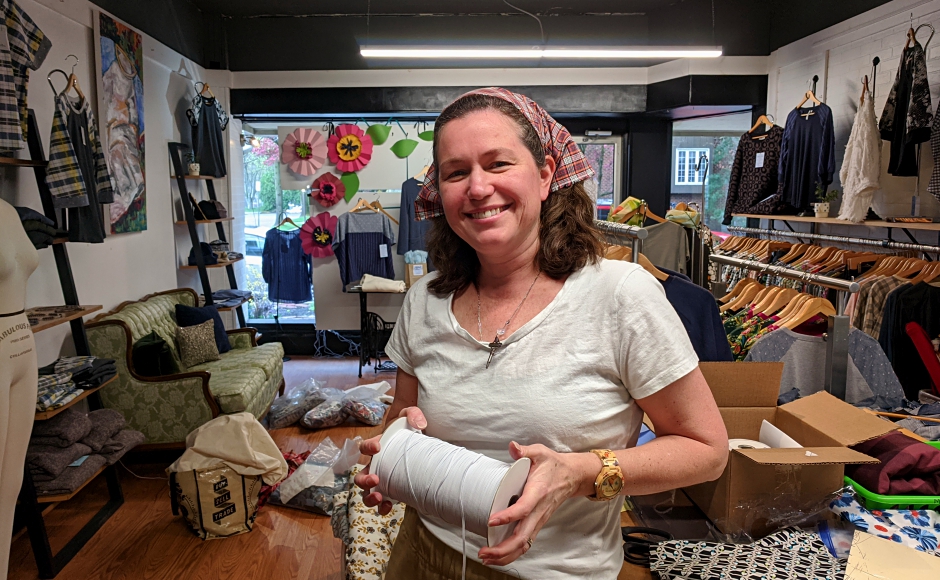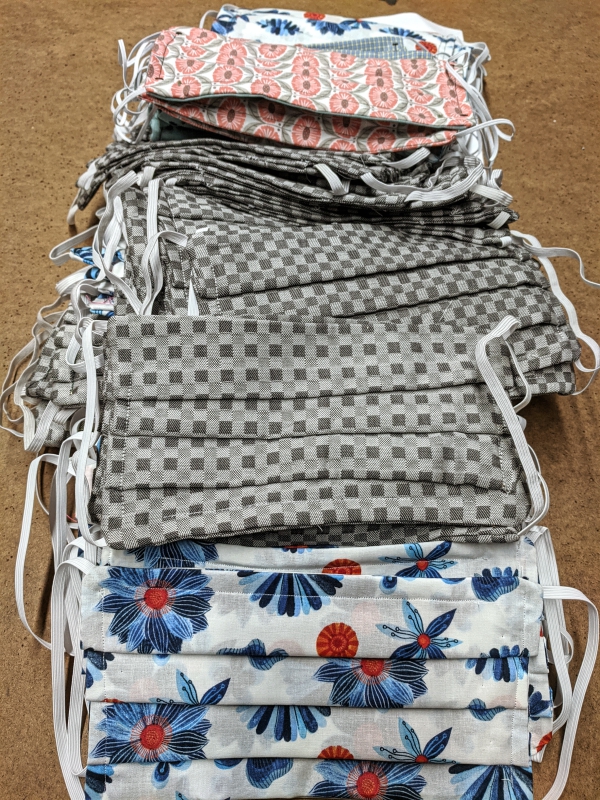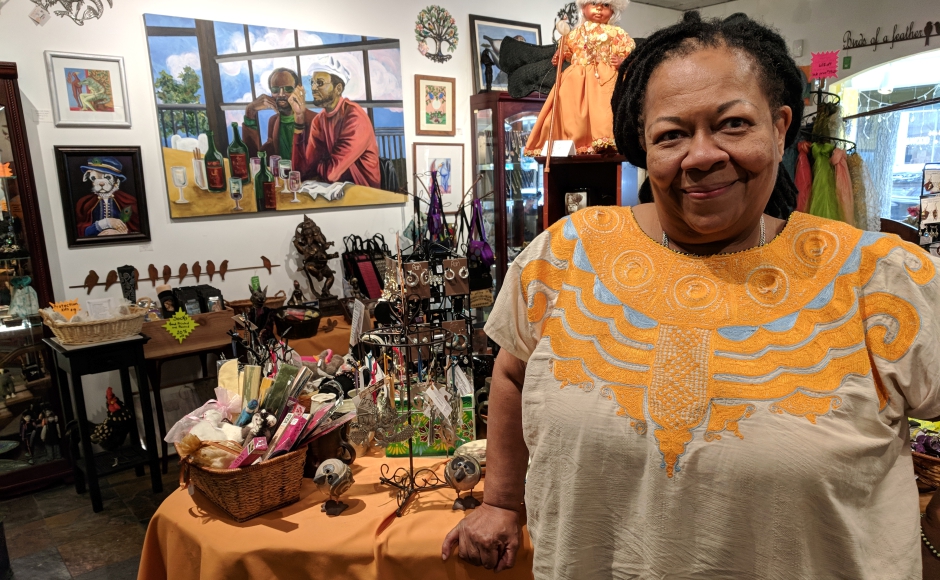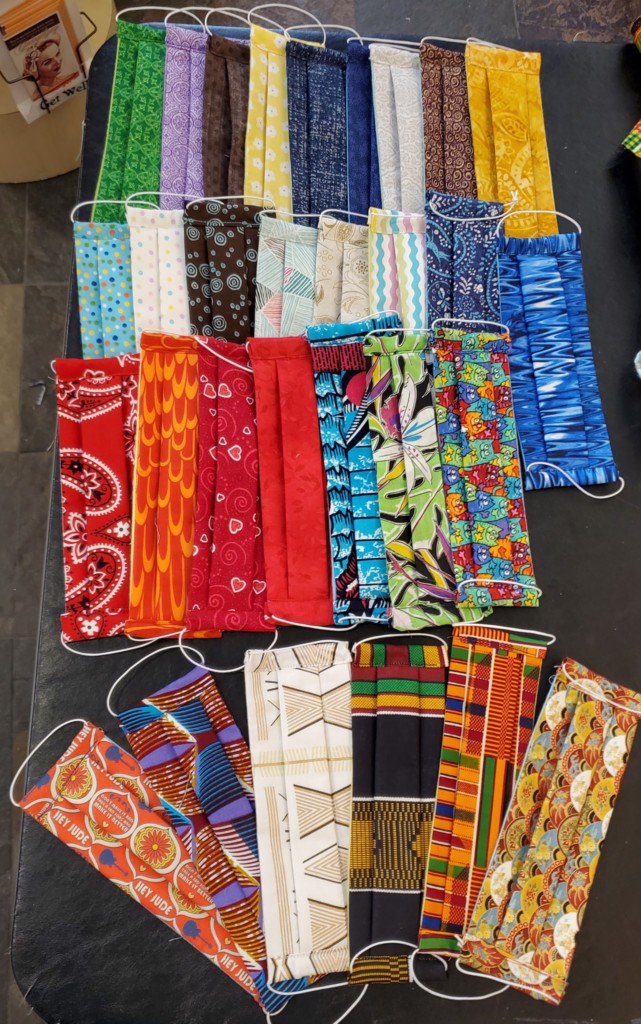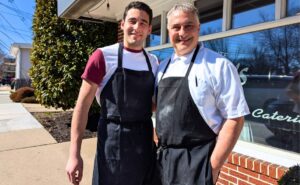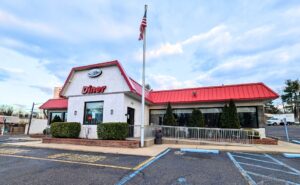Like many retailers, fabric artists have seen their businesses take a beating during the pandemic. Making cloth face-coverings has been a way to tread water and do some good until normal shopping habits resume.
By Katrina Janco and Matt Skoufalos
July 9, 2020
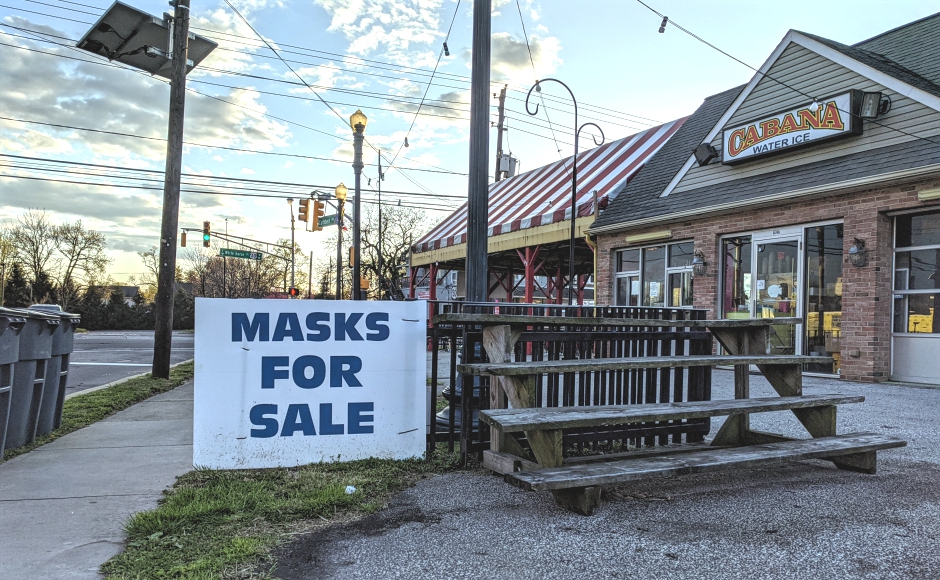
“Masks for Sale,” sign outslde Cabana Water Ice in Haddon Township, April 8, 2020. Credit: Matt Skoufalos.
The novel coronavirus (COVID-19) pandemic has fundamentally changed life for millions of Americans, including how many make ends meet.
For several local artisans, this has meant sidelining their original business models to make cloth face coverings instead.
In March, cloth masks were in very high demand from healthcare workers, as a global shortage in personal protective equipment (PPE) led to a massive cottage effort to provide even some support for those on the front lines of the pandemic.
Next came regular citizens, who have been legally required to wear face coverings inside essential New Jersey businesses since an April 8 executive order. Three months thereafter, Governor Phil Murphy mandated the wearing of face coverings outside when social distancing isn’t possible.
Given the effectiveness of even a simple cloth mask at decreasing COVID-19 transmission when worn universally, and the current lack of vaccines or antiviral treatments for the virus, demand for masks is likely to persist for a while.
For those who work in the cloth crafts, mask-making is a chance to do some good; Kimberly Camp of Galerie Marie in Collingswood likened the effort to humanitarian clothing donations after a hurricane.
However, the pandemic also has been economically devastating for brick-and-mortar businesses like hers, and mask-making is also a way to help make ends meet.
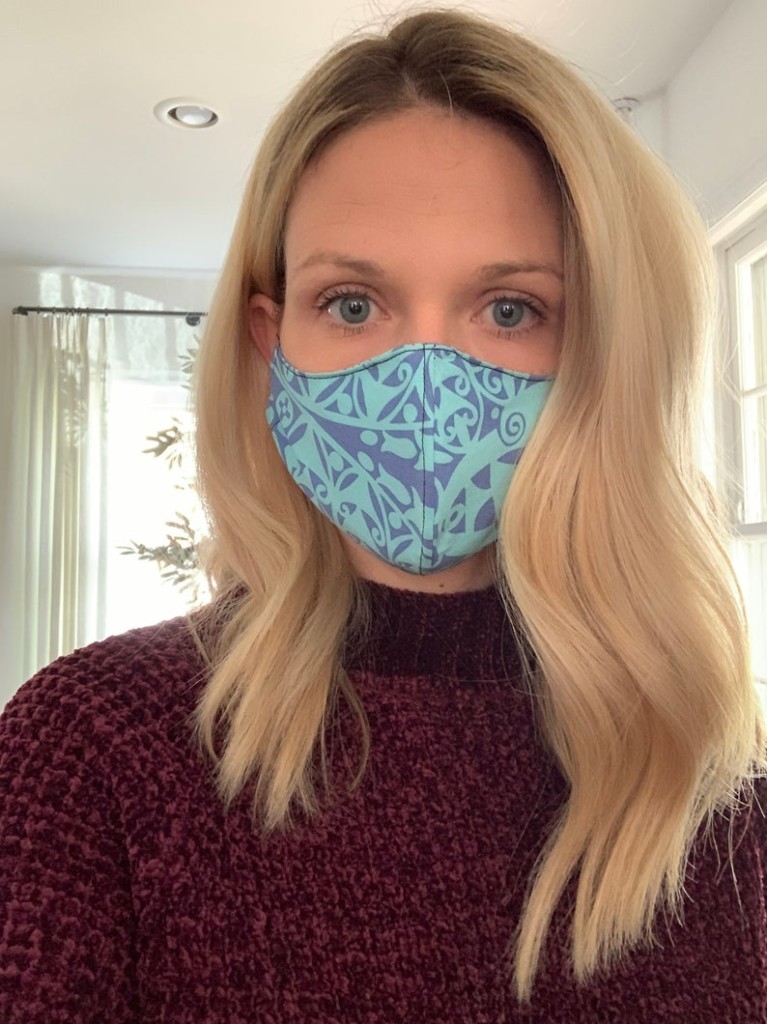
Haddon Heights resident Kelly Roche has offered COVID-19 masks through her ElleSEAshoppe. Credit: Kelly Roche.
Haddon Heights resident Kelly Roche, whose home decor company ElleSEAshoppe shifted its focus to mask-making in April, said the move has also created employment opportunities.
By leveraging her established relationships with Philadelphia-based sewing manufacturers, “We’re putting people to work,” Roche said.
More hands put to the task means many more masks than Roche, a mother of two young daughters, could produce on her own at home.
Like other mask-makers, ElleSEA has also offered free masks to essential employees.
Shoppers were given the option to pay for cost of a donated mask, or to make additional donations covering the cost of a mask for the next person in line.
Roche said she’s shipped them all over the country.
Camp, too, has shipped her handmade masks everywhere, although she also said the efforts are only pulling in a quarter of what she normally would earn if her storefront were open as normal. Fashion designer Betsy Cook of the Haddonfield-based National Picnic said her in-store sales were down more than 60 percent in May.
Neither of them knows when normal buying habits will return.
“I was told to anticipate an 80 percent drop in business for my industry,” Cook said. “They were pretty much on the ball.
“It’s awkward to be fighting for your business’s life at the same time [as other people are fighting for theirs],” she said. “It’s not the same as a human life, but it’s a fight to keep everything going.”
Back in March 2020, as COVID-19 had begun to make its mark on retail “in unpredictable ways,” Cook began the COVID-19 Mask Project. Using her own fabric inventory and a roster of volunteer sewists, National Picnic coordinated the production of mask donations for healthcare workers while Cook and her employees made retail masks for private customers.
That led to “a fire hose of inquiries,” she said.
The problem with running concurrent retail and donation programs is that both sets of customers “expect a turnaround” that’s difficult to achieve given limited supplies, Cook said.
Early on, fabric wholesalers were backed up by the spike in demand from home-based makers as well as private enterprise; Camp said she’d used more than 600 yards of elastic for her masks by the spring.
“Customers buying masks to support the effort is really valuable, but at the same time, it can overwhelm the time we have to spend on volunteer stuff,” Cook said.
“They’re literally competing for time, but one helps the other,” she said.
“It’s just a matter of deciding at what point you stop making the customers their masks to keep up with the project.”
In addition to being a smart public health decision, buying a handmade mask from a small, local artist is also a way to support a neighbor’s business during the economic downturn that has accompanies the pandemic.
Camp remarked on a dearth of specific supports in federal aid packages for artists who’ve been sidelined by the virus. Visual artists are also at a disadvantage for traditional aid models because they often lack financial documents and may struggle to predict the extent of the economic impact of the virus on their livelihoods as compared to people in other industries, she said.
“People think that arts are a side thing, like they’re not important to life, [but] when this is all over—and it will be over at some point—and people start to think about what the heck happened, the answer [will come] from artists,” Camp said.
Camp, whose own 52-year career in the arts has included works exhibited in the Smithsonian and a stint as CEO of Philadelphia’s Barnes Foundation, said the arts sector is likely going to be “one of the last ones to come back.” By supporting a handmade mask maker, you’re protecting yourself and the people around you in more ways than one, she said.
“For $15, you get a Kimberly Camp original,” she said.
Business owners can apply for payroll protection (PPP) loans, but for Cook, the application process was a “very stressful… beat-the-clock” experience.
(Cook documented many of her struggles in an online diary.)
“It was a race to get information submitted, not just before a deadline, but before other businesses that were similarly all trying to get a piece of the relief,” she said.
Although her PPP loan was eventually approved, it just as quickly went out the door to pay her employees.
“I feel like my little piece of the PPP is doing what it’s supposed to,” Cook said. “Having it has also helped me mentally, with the uncertainty of the months ahead.”
She and Camp agree that mask-making, which was initially believed to just be a temporary enterprise, isn’t going away any time soon.
“People are wearing whatever works in a pinch for now, but will gradually find the mask that fits them best and even expresses their personality, so when masks must be worn, it is something that person will like having on their face,” Cook said.
Beyond mask-making, Camp converted her gallery to accommodate “the COVID reality.”
She bought shrink wrap to cover work, put art under glass, and installed a barrier at the cash register.
Yet even as shoppers return in dribs and drabs, part of her anxiety has been seeing how casually members of the public are treating mask regulations.
“It’s a bit scary, I’ve got to say,” Camp sighed.
To her, one of the most important things people can do is to wear a mask, and wear it properly in close quarters: tightly fitted across the nose and mouth.
Cook said she’s hopeful that people will continue to limit their face-to-face interactions to avoid contracting or spreading the virus.
“The best thing you can do is put yourself in situations so that you don’t need a mask,” she said.

